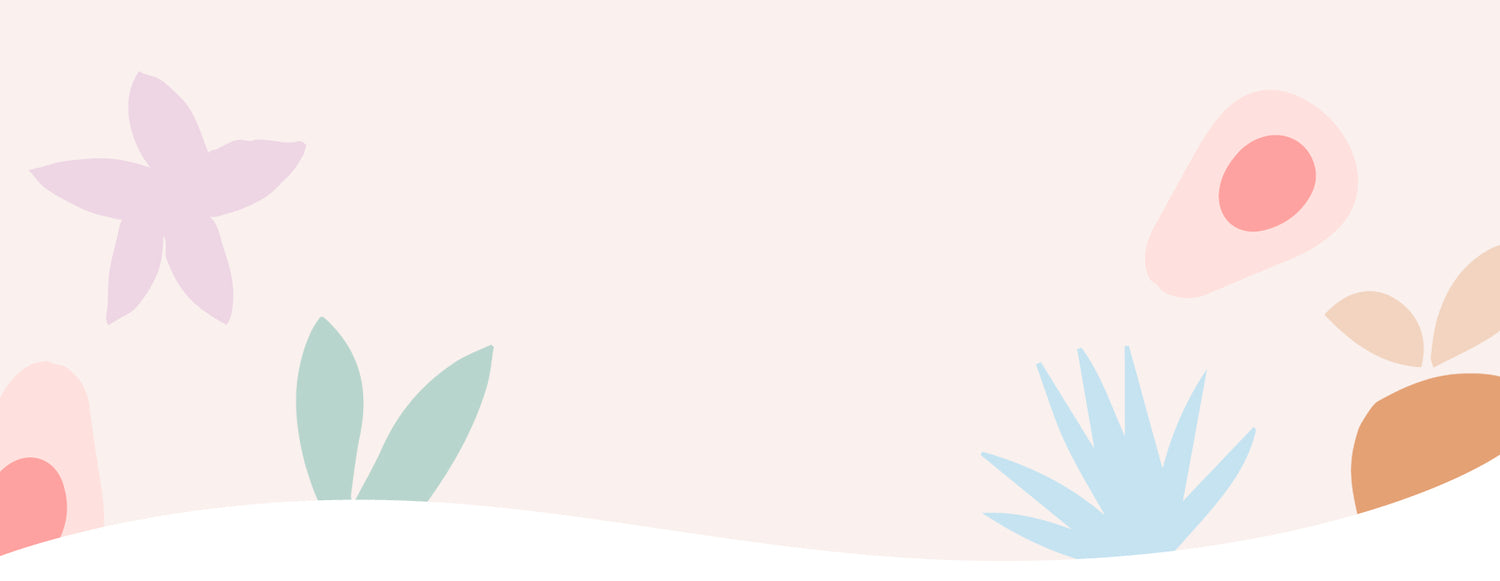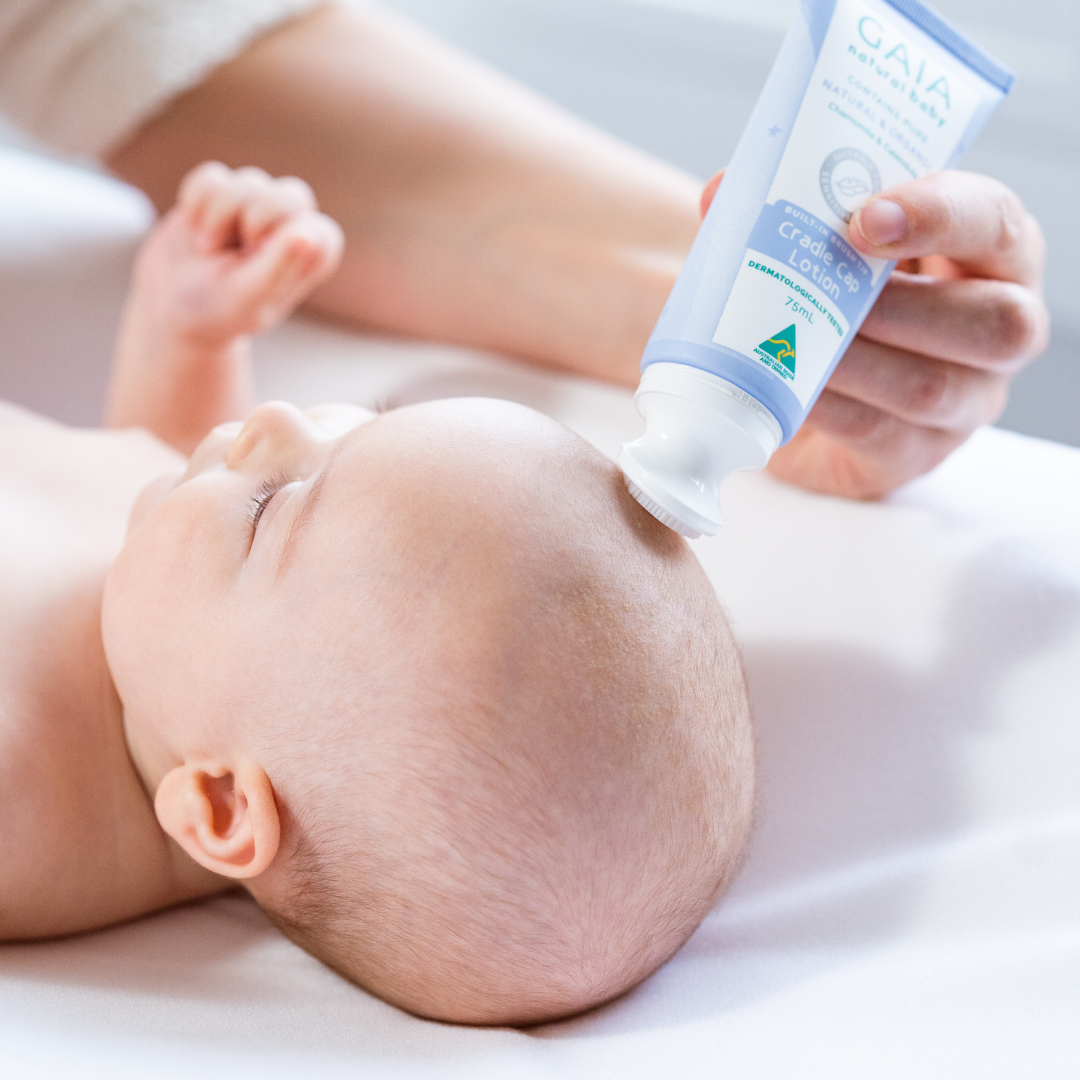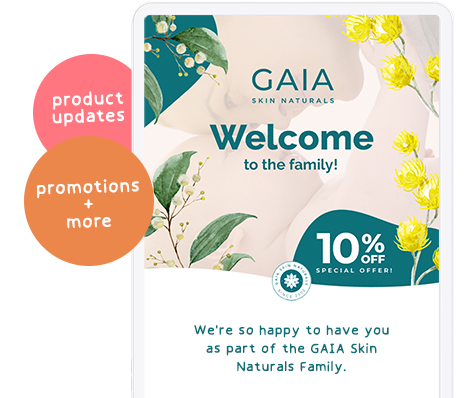Cradle cap is common in young babies, especially in the first couple of months after birth. Sometimes it continues for up to 12 months. The formal name for cradle cap is seborrhoeic dermatitis. Cradle cap is not a sign of poor hygiene or neglect, but generally a result of too much sebum (oil) being produced by the baby’s scalp. It is not contagious and does not cause itching.
Once the baby’s oil glands settle down and don’t produce too much sebum, cradle cap generally improves. However, there are some things parents can do in the meantime to manage the condition and improve the appearance of their baby’s scalp.
What is cradle cap?
Cradle cap is a build up of yellow, greasy patches on the baby’s scalp. Sometimes it may also appear in the eyebrows and behind their ears. Cradle cap can look like scabs on the baby’s scalp, most commonly over the soft spot – anterior fontanelle. The skin around and underneath the scales can look red and flaky. Where cradle cap is thick, there can be some hair loss when the areas of skin loosen and the cradle cap lifts.
What causes cradle cap?
Cradle cap is caused when the baby’s scalp makes too much oil. Some babies are more prone to this, particularly those with a family history of eczema, asthma and other allergic conditions. When the oil builds up, it prevents the skin cells from being shed. Cradle cap is a build up of oil combined with old skin cells on the scalp.
Sometimes parents are anxious about touching or washing their baby’s scalp, especially in the area of the ‘soft spot’. As long as you are gentle and use only your fingertips to gently massage your baby’s scalp, you won’t cause any harm. Ask your partner, a trusted family member or friend to help you if you’re feeling nervous about washing your baby’s head.
How can I treat my baby’s cradle cap?
You don’t need to do anything special, other than pay more attention when you’re bathing your baby and washing them.
- In the same way that we massage our scalp when we’re washing our own hair, babies need this to be done at least a couple of times each week.
- Massage a little olive oil into your baby’s scalp around where the scales are. You can also buy special cradle cap softening products which help to loosen the crusts so they can be washed off.
- Leave the oil or product on your baby’s scalp for a few hours and then use a soft baby hair brush to lift the crusts. It can sometimes help to brush their hair and scalp in the opposite direction to how the hair grows.
- Wash your baby’s hair and scalp with baby shampoo or gentle baby bath wash. Use your fingertips to massage their scalp and remove the crusts. If there is a thick build up of crusts, it can take a couple of times to remove them. You could also try using a soft toothbrush or cotton bud to lift the crusts.
- Occasionally, using shampoo with an anti-fungal agent is helpful, especially if a yeast infection is present. Speak with your doctor first if you want to try a mild anti-dandruff shampoo.
- Towel dry your baby’s scalp and brush their hair and scalp with a (clean) soft baby hair brush.
What not to do for your baby’s cradle cap
It pays to be gentle when managing cradle cap and try to remove the crusts over a couple of days to avoid any skin irritation.
- Avoid picking at the crusts, or using any products with strong perfumes which may irritate their skin.
- Don’t use any harsh abrasives to remove the cradle cap crusts.
When should I see a doctor about my baby’s cradle cap?
If you have been trying to treat their cradle cap but it’s not helping, it may help to see your doctor.
Sometimes the skin underneath the crusts can become red and infected. Occasionally, eczema can develop as well. Antibiotics, a mild hydrocortisone or an antifungal cream can target the specific cause of the skin reaction.
References
ACD A-Z of Skin - Seborrhoeic Dermatitis and Cradle Cap (dermcoll.edu.au)
Seborrhoeic dermatitis - treatment and causes | healthdirect
Written for GAIA by Jane Barry, Midwife and Child Health Nurse, January 2023.



